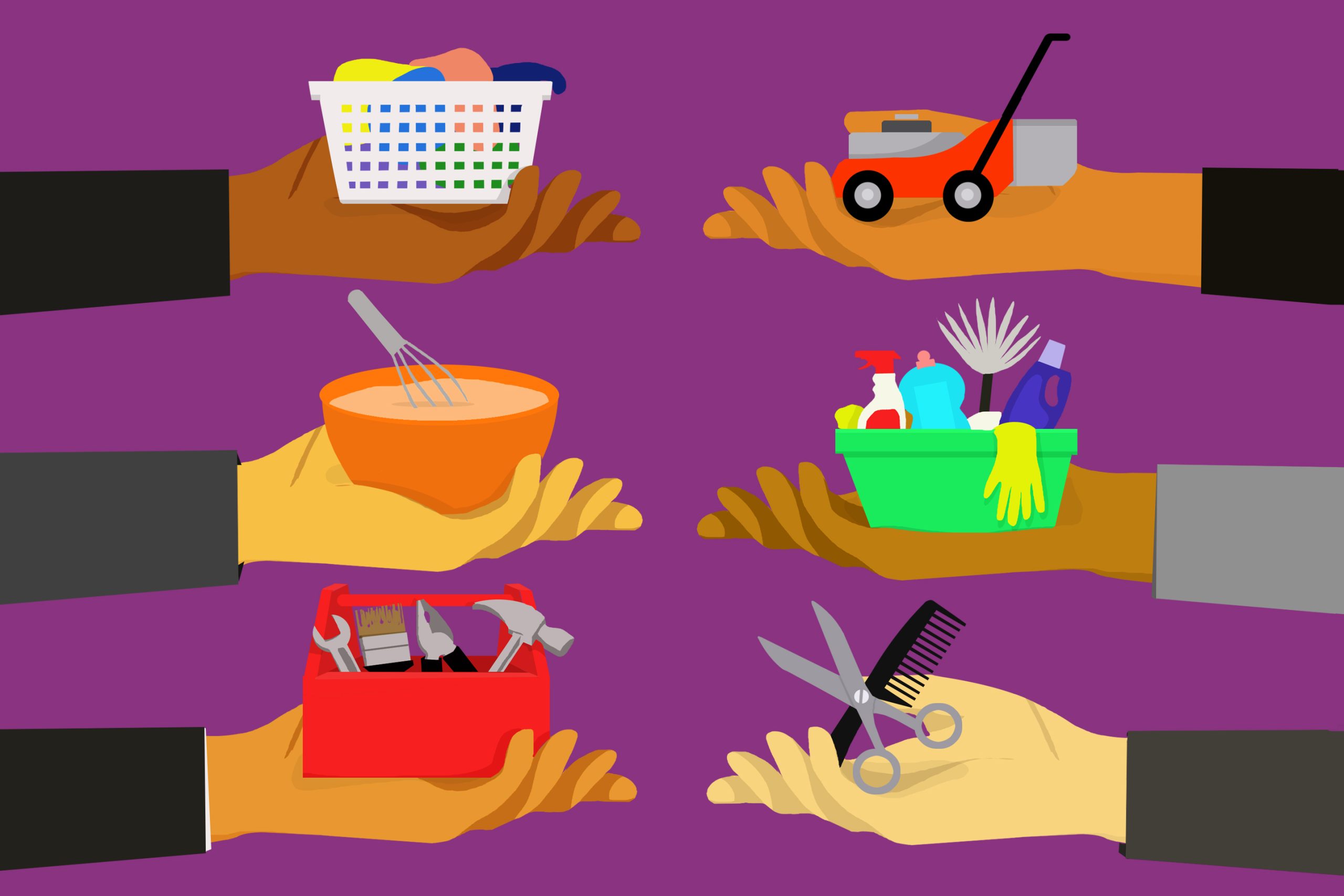Participating In Food Sharing And Bartering Communities
As prices at the grocery store continue to climb, many of us search for clever ways to stretch our food budgets. One surprisingly effective solution harkens back to an age-old practice: bartering and food sharing.
Imagine swapping your homemade apricot butter for a neighbor’s sourdough loaf without spending a dime—this is the essence of food bartering and why it matters today.
The concept isn’t new; recent trends show that amidst the global impact of COVID-19, communities are reviving this traditional exchange system. From flour to yeast, these essential items have found their way into informal trading circles as families adapt to supply chain challenges.
In this article, we’ll guide you through participating in food sharing and bartering communities—a strategy that conserves cash and enriches our connections with those around us.
Get ready to save money and savor the satisfaction of successful swaps!
Key Takeaways
- You can save money and make friends by joining food-sharing and bartering groups where you trade things like homemade jams or help in the garden without using cash.
- Look for local trading groups online on Facebook, Craigslist, or community boards at libraries and coffee shops.
- Before you start trading, consider what you can offer others, like fresh veggies from your garden or your skill in making yummy treats.
- Foods that don’t spoil quickly, such as canned goods, are good for trading because they last a long time.
- It’s important to talk clearly and be honest when setting up trades. This helps everyone trust each other and makes sure trades are fair.
What is Food Sharing and Bartering?

Food sharing and bartering involve the exchange of goods, services, or food items without using money. These practices have a long history and offer benefits such as building community connections, reducing waste, and saving money.
Definition and history
Food sharing and bartering are trading goods or services without money. People have been doing this for a very long time. Early civilizations used the barter system before there was money.
Traditional societies traded things like food and help with work to get what they needed.
Today, people save money by trading homemade foods or working for each other. Local groups meet up to swap things like jarred jams or gardening help. There’s no cash involved, just an even trade of good stuff or helpful services.
It’s a great way for neighbors to help each other out and keep old traditions alive in modern times.
Benefits of participating
Joining a food sharing and bartering community can help you save money. You trade what you have for what you need without any cash involved. If you grow tomatoes but need rice, someone else might need your tomatoes and have rice to spare.
Everyone gets what they want, and no one spends money.
Being part of these groups also connects you with neighbors who like to swap goods and services. This builds trust and friendship in the community. Plus, using things again instead of buying new ones is good for our planet.
When we share or trade items we can’t use, we cut down on waste. It’s a smart way to live that cares for people and the earth.
How to Participate in Food-Sharing and Bartering Communities

To participate in food sharing and bartering communities, find local groups or online platforms where people trade goods. Identify what you can offer, whether specialty recipes, homegrown produce, or handmade items.
Then, set up trades with others based on mutual needs and interests.
Finding local groups
Food sharing and bartering are great ways to save money and get your needed things. They help people trade food or items without using cash. Here’s how to find local groups:
- Search online for local food swap or barter exchange groups in your area. Websites like Facebook, Craigslist, or even Nextdoor can have information on community trading.
- Visit a farmer’s market and chat with vendors. They often know about local food sharing communities and could guide you.
- Check out community bulletin boards at libraries, grocery stores, or coffee shops for flyers about food swaps.
- Ask friends or neighbors if they know of any bartering groups. They might already be part of one and can introduce you.
- Look up gardening clubs or cooking classes Members sometimes share their produce or dishes.
- Reach out to local community centers as they may host swap events or have connections to bartering networks.
Identifying what you can offer
When exploring food sharing and bartering communities, it’s essential to identify what you can offer. This could be excess produce from your garden, homemade preserves or baked goods, handyman skills, or even pet-sitting services.
By recognizing your strengths and resources, you can actively contribute to the community while saving money by exchanging goods or services with others.
Understanding what you can bring to the table facilitates successful trades and fosters a sense of mutual benefit within the community. Your unique offerings contribute to the diversity of items available for trade and enrich the overall experience of participating in food sharing and bartering communities.
Embracing this mindset allows for meaningful connections and exchanging valuable resources that cater to everyone’s needs.
Setting up trades
Setting up trades involves some key steps that can help you maximize your benefits:
- Assess what you have to offer, whether it’s surplus produce from your garden or specialized skills like baking or carpentry. Know your strengths and resources.
- Contact local community groups or online platforms facilitating bartering and trading. Joining these networks broadens your trade options.
- Communicate clearly with potential trade partners about what you need and what you can provide. Transparency is key to successful exchanges.
- Establish fair and equitable trades, considering the value of the exchanged items or services.
- Always prioritize proper storage and handling of items to maintain their quality until the trade occurs.
- Build trust by honoring commitments and following through with agreed-upon trades, fostering a positive and reliable reputation within the community.
What Foods and Items are Popular for Sharing and Bartering?

Popularity for sharing and bartering includes specialty recipes, wild foraged foods, and non-perishable items. These items are sought after due to their uniqueness or long shelf life.
Specialty recipes
Specialty recipes for bartering and sharing can include items such as the world’s best-salted caramel sauce, which is highly sought after in food swap events. Individuals can showcase their culinary skills by trading homemade artisanal items with others in exchange for different specialties when participating in food sharing and bartering communities.
This allows a diverse range of foods to be shared without monetary transactions, making it an excellent way to save money while enjoying unique and high-quality offerings.
Wild foraged foods
Wild foraged foods, like deer and various berries, bring high-quality nutrition without the hefty price tag. These natural options support chronic disease prevention and provide a diverse range of nutrients, especially when trying to save money on groceries.
Human food foraging in rural areas also provides extensive sources of food and nutrition that can contribute to your health and well-being. In addition, turning to wild foraged foods can be part of community traditions and cultural identities, all while offering cost-effective alternatives to store-bought products.
Moving on to – What Foods and Items are Popular for Sharing and Bartering?
Non-perishable items
In addition to wild foraged foods, non-perishable items like canned vegetables, fruits, and meats are highly sought after in food sharing and bartering communities. These long-lasting goods provide a reliable source of sustenance and convenience, making them valuable commodities for those looking to save money or diversify their pantry.
The COVID-19 pandemic has further emphasized the practicality of non-perishable items as people turn to staples like rice, beans, and canned goods to ensure they have essential supplies.
By participating in food sharing and bartering with non-perishable items, individuals can meet their immediate needs and build a network of mutual support within their community.
Tips for Successful Food Sharing and Bartering

Communication and trust are essential in food sharing and bartering communities, as well as proper storage and handling of items to maintain quality. Remembering the value of fair trade is also crucial for a successful exchange.
Keep reading to learn more about how you can participate in these communities and reap the benefits!
Communication and trust
Clear and honest communication is key in bartering. Make sure to express your needs and what you can offer accurately. This helps build trust and understanding between participants.
In a food-sharing community, trust is vital because it allows people to feel comfortable exchanging goods without money involved. Strong relationships in these communities foster trust, cooperation, and social cohesion.
In bartering or food-sharing groups, being transparent about the quality of your items can help establish credibility and reliability among other members. This ensures that everyone understands the value of what they receive or give, leading to fair trade.
Proper storage and handling
Proper storage and handling of food items are essential for maintaining their quality and safety. Storing perishable foods like fruits, vegetables, and dairy products in the refrigerator can help extend their shelf life.
Additionally, storing non-perishable items such as grains, canned goods, and dried foods in a cool, dry place away from direct sunlight can prevent spoilage and maintain their freshness.
Properly sealing food containers to prevent exposure to air and moisture is also crucial in preserving the integrity of the stored items.
When handling food for bartering or sharing, it’s important to practice good hygiene by washing hands before and after handling food items. Avoiding cross-contamination between different types of foods is vital for preventing foodborne illnesses.
Remembering the value of fair trades
When engaging in food sharing and bartering, it’s important to remember the value of fair trade. Fairtrade ensures that both parties benefit equally from the exchange, creating a sense of mutual respect and trust within the community.
By upholding fairness in your exchanges, you contribute to the sustainability and success of these sharing economies by fostering positive relationships. This helps you save money and builds a network where everyone can access necessary goods and services without relying on traditional currency.
Fairness is at the core of successful food sharing and bartering communities, as it promotes equality and ensures that every participant feels valued.
FAQs

1. What is bartering and trade in food sharing communities?
Bartering and trading in food sharing communities means swapping foods you have for ones you need without money changing hands.
2. Can I still use bartering today, even with stores like Amazon.com around?
While buying and selling are common, bartering is still really used today, especially during economic uncertainty or when you know your neighbors well.
3. Are there any benefits to trading and bartering instead of using money?
Benefits of bartering include saving money, getting goods or services without spending cash, acting out of kindness, and enjoying being part of a community that helps each other.
4. What can I swap in a food-sharing or barter situation?
You could swap many things like home-grown vegetables for child care, music lessons for dental work, or even lavender shortbread for a babysitter – depending on what others need!
5. Do I have to pay taxes if I barter goods or professional services?
Even though no cash is involved in a barter arrangement, the value of goods or professional services traded might have tax implications.
6. How does time banking work as part of informal bartering?
With time banking, you do something for another person, like fix their rototiller and earn hours; later, someone else gives their time to help you – kind of an even exchange!

